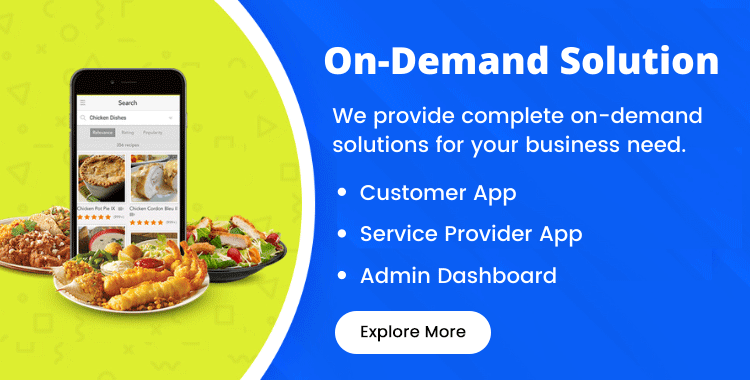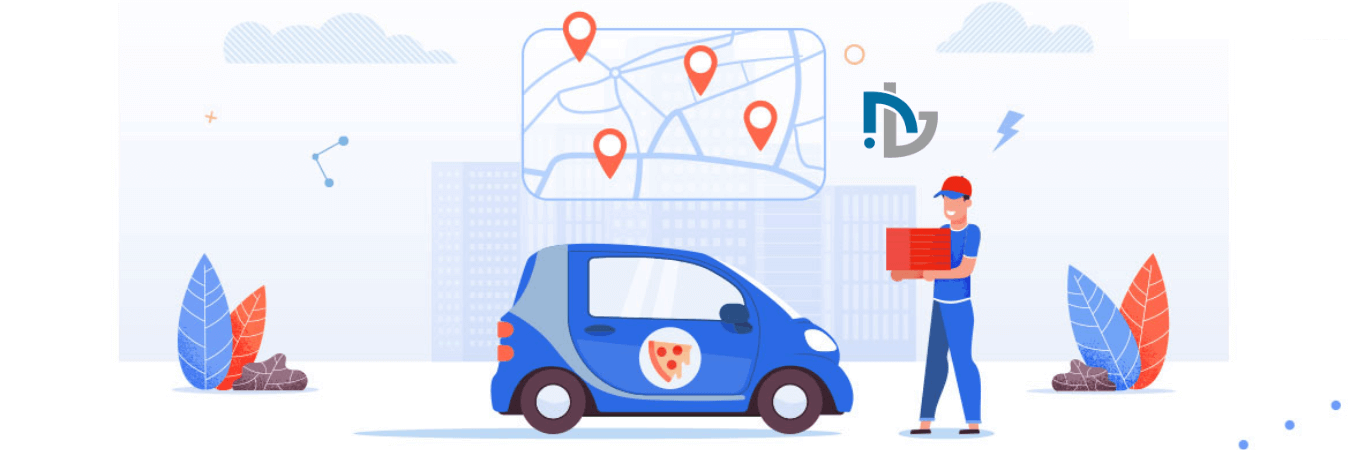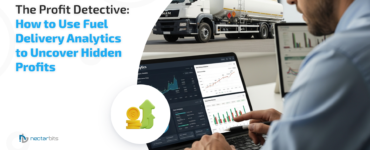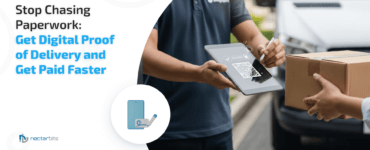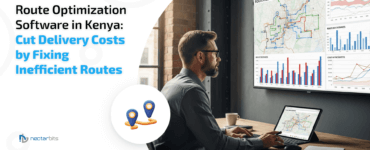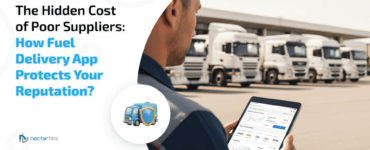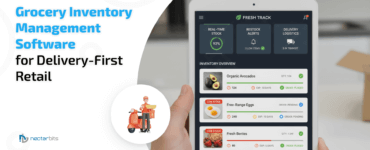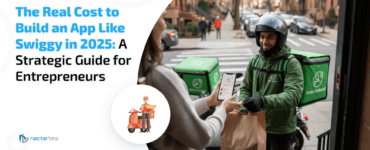With- Covid-19 has badly hit every industry vertical, but last-mile delivery app development has got a positive lift up. See the facts confirming the same.
- The global autonomous last-mile delivery market is expected to be valued at $15.70 billion in 2021 and is projected to reach $117.9 billion by 2030.
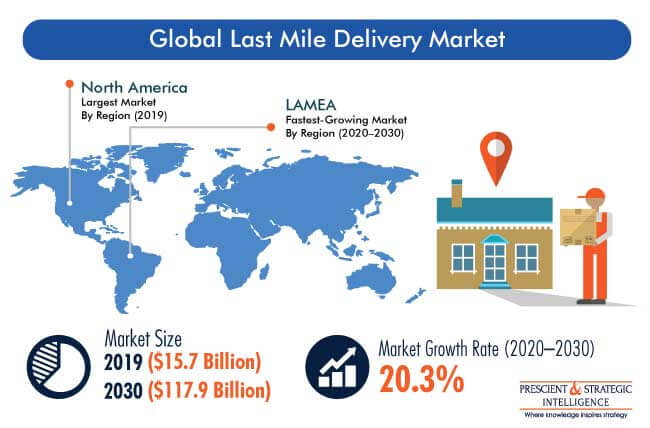
- The vehicle type, that’s ground delivery bots’ segment is expected to generate $4.56 billion in revenue, and is estimated to reach $34.90 billion by 2030.
- North America is projected as the highest revenue contributor, accounting for $4.83 billion by 2021, and is estimated to reach $39.94 billion by 2030.
Why is it so?
The last-mile delivery that acts as a user-facing part of the business facilitates expedited deliveries, enables efficient tracking, and forms an important part of the value chain. Moreover, it has become a cog in the Ecommerce wheel, that’s reducing logistics costs and delighting customers by meeting the need for speed.
However, everything is not so rosy. The last-mile delivery- the final leg of the supply chain is facing several challenges due to evolving trends, changing customer expectations, and modernization. It necessitates the companies to adopt the trends to prevent worse conditions and secure a bright future.
10 latest trends that Ecommerce is warmly embracing to optimize order fulfillment via the last-mile delivery app solution.
🕹️ Next-Gen Solutions Transforming the Last-Mile Experience
🔥 1. Humanoid Robots for Doorstep Deliveries
With companies like Amazon piloting AI-powered humanoid robots for last-mile logistics, delivery robots are moving beyond wheeled platforms to anthropomorphic systems that can climb stairs, open doors, and place parcels safely indoors.
Key Highlights:
- Robots like Digit can mimic human movement to navigate curbs, stairs, and obstacles.
- Can handle heavier payloads compared to traditional sidewalk bots.
- Enhances delivery in complex urban layouts like condos, offices, or gated societies.
- Works alongside delivery vans to automate the final handoff.
🚇 2. Underground Urban Freight Transport (UFT)
Cities are experimenting with underground tunnel systems for parcel delivery, helping remove traffic congestion and lower pollution above ground.
Key Highlights:
- Delivers parcels using underground pneumatic tubes or robotic carts.
- Reduces reliance on surface roads during peak hours.
- Enables consistent delivery windows, unaffected by weather or traffic.
- Ideal for urban cores, malls, and commercial hubs.
🤖 3. Sidewalk Delivery Bots for Ultra-Local Logistics
Companies like Starship, Serve Robotics, and Avride are scaling autonomous sidewalk bots that serve customers within a 1–2 mile radius.
Key Highlights:
- Battery-powered bots navigate sidewalks and crosswalks.
- Equipped with cameras, LiDAR, and obstacle-detection AI.
- Operates on campuses, residential societies, and business parks.
- Enables cost-effective, fee-free delivery of groceries, medicines, and small parcels.
🔌 4. EV-Optimized Last-Mile Routing
As electric delivery fleets become the norm, logistics apps now optimize routes considering battery capacity, charging station availability, and temperature conditions that affect range.
Key Highlights:
- Reduces route failure due to unexpected EV drainage.
- AI adapts route if fast-charging stations are full or unavailable.
- Lowers energy consumption and optimizes charge cycles.
- Helps logistics meet green delivery KPIs without disruptions.
📦 5. Hyper-Expanded Smart Locker Networks
Smart lockers and parcel hubs are expanding rapidly across residential complexes, retail stores, metro stations, and parking lots.
Key Highlights:
- Offers secure, contactless parcel pickup without coordination.
- Enables 24/7 access, reducing failed delivery attempts.
- Supports reverse logistics (returns, repairs).
- Can be branded for retail or eCommerce partners.
🔐 6. Blockchain Smart Contracts in Delivery Payment
Blockchain-based smart contracts are being introduced to automate delivery verification and instant payments upon successful drop-off.
Key Highlights:
- Eliminates payment disputes in gig delivery platforms.
- Ensures full traceability of package status.
- Enables peer-to-peer delivery with automatic fund release.
- Reduces fraud by locking funds in escrow until delivery is verified.
🧠 7. Cognitive Robots for Apartment Complexes
Cognitive delivery bots with AI-driven visual recognition and natural language processing (NLP) are being tested in high-rise apartments and smart buildings.
Key Highlights:
- Can use elevators, navigate corridors, and identify apartments via signage.
- Interacts with residents or building staff using speech commands.
- Delivers to doorsteps inside controlled-access buildings.
- Improves delivery success in urban vertical housing.
✈️ 8. Hybrid Truck-Drone Delivery Models
Instead of separate drone deliveries, trucks carry drones that are launched mid-route to deliver parcels to nearby addresses and reconvene with the truck.
Key Highlights:
- Drones handle outlier stops while trucks focus on dense areas.
- Increases delivery volume per route.
- Reduces emissions and fuel use.
- Ideal for suburban or rural hybrid routes.
🧑🤝🧑 9. Cross-Industry Ecosystem Integrations
Logistics services are embedding into retail, real estate, healthcare, and fintech ecosystems for more seamless delivery experiences.
Key Highlights:
- In-building parcel lockers for apartments and co-living spaces.
- Integrated delivery status in online retail checkout flows.
- Delivery-enabled eWallets or BNPL for secure handover.
- In-mall or in-store pickup integrations via partner APIs.
📊 10. Predictive Demand-Based Prepositioning
AI and data analytics are being used to forecast demand surges and preposition inventory or delivery personnel before orders are even placed.
Key Highlights:
- Uses historical trends, weather, and event data.
- Reduces SLA breaches during spikes (e.g. holidays, sales).
- Enhances same-day delivery success rate.
- Cuts operational downtime through predictive staffing.
🌍 Beyond 2024: Cutting-Edge Trends Defining the Future of Delivery
Zero-touch delivery
The concept of contactless delivery was unimaginable before coronavirus hit the world. Later, the pandemic has made social distancing, masking, and sanitization measures essential due to safety concerns. The last-mile delivery is no exception. The people ordering online expect contactless deliveries at the minimum, which in turn, helps Ecommerce win customers.
With complete digitization, the companies have digitized the delivery process from end-to-end, including digital invoices, proof of delivery, digital payment, and others.
Technology-driven bots making inroads
With human delivery agents, the accuracy level is not 100% as it’s realized with machines. This is the reason the Ecommerce giants are experimenting with machine agents such as drones or robots for order delivery. Amazon has spent more than 500 million dollars on drone delivery testing.
The new age of delivery services is gaining traction among retail giants as they are warmly embracing it. However, the customers’ acceptance rate for the technology is still unclear and the government has still not approved such a form of delivery, which’s expected to undergo a few regulations as well.
Urban warehouse development for rapid order fulfillment
In the age of instant gratification, the demands from customers to get the product faster and easier have increased by a great margin. The online Ecommerce stores have started meeting this need with a one-day or two-day delivery window. However, it’s impossible to meet the need unless warehouse management is done properly.
This is the reason, the companies have started building warehouses or fulfillment centers in the urban areas that reduce the transit time and easy access to laborers, thus deliveries are made faster. Amazon Prime is the popular example of the same that has made one-day delivery possible by building warehouses close to the urban areas.
Micro-warehousing to improve delivery operations
The same-day delivery or on-hour delivery windows becomes a headache for the Ecommerce development stores during the Holiday season or other occasions. This is where renting the commercial space for increased order fulfillment operations is a great solution. Building various micro-warehouses helps in keeping the stock of products and meeting the unexpected rise in demand.
The companies distribute the inventory in different micro warehouses to meet various types of delivery needs. For instance, the most popular products are kept in stock in the nearest micro-warehouse to fulfill the order at speed.
Building a fleet of vehicles for deliveries
Retail giants like- Amazon have made a move towards handling the order fulfillment on their own by creating a fleet of vehicles or preferring a hybrid model rather than outsourcing last-mile delivery services to third-party logistics. With insourcing deliveries, the company can handle the supply chain from end to end.
With a centralized dashboard, vehicle management, route optimization, vehicle location monitoring, and delivery updates are viewed under the last-mile delivery umbrella. Many companies are exploring this trend to better manage the business on the wheels for efficient last-mile deliveries.
Location intelligence has made tracking smarter
Undoubtedly, with access to everything in a single tap, the customers expect to track the orders right from the moment it’s shipped and in transit, to the time it’s delivered. Thanks to technology that has made it possible by embedding sensors in the packages. The smart technology allows customers to track temperature, humidity, pressure, and other things in real-time so that they get to know about food, medicines, or spirits quality maintained.

In the same vein, the warehouse and third-party logistics can better take care of orders by planning the package based on the weather information received through technology advancement. The technology helps a ton in improving customers’ visibility into order fulfillment and increasing business’ financial gains.
Read more: Comprehensive Guide For Your Ecommerce Store Development
Upselling by turning drivers into salesman
The brick-and-mortars have experienced a good time in pursuing the customers to purchase more. The online stores have also invested bundles to increase the order volume through cross-selling, smart recommendations, and up-selling. However, the companies are exploring new avenues of increasing basket size when the product delivery is done.
Yes, you got it right. The delivery agents a returned into salesman where they keep stock of all the products in the truck that customers generally order by analyzing the customers’ purchase history. However, the concept of the mobile warehouse is still in the nascent stage because of the associated issues such as payment processing, accounting, taking care of returns, and others.
Read More : Mobile Apps Are Transforming The Transport Industry
Autonomous vehicles are suspected
In the corona outbreak, we have witnessed the shortage of laborers and drivers due to enormous risks that exist outside. That’s where driverless vehicles fill the void with 24/7 delivery possibility at a reduced cost alongside ensuring a higher level of accuracy. Although advanced technology leverage is a must to resolve the operational issues. Taking care of government regulations is also important else it put the businesses fall into serious jurisdiction issues.
Amazon is the best instance of it that has placed a bet on self-driving vehicles with huge spending. The robot- Amazon Scout is expected to debut in the market in the year 2021.
Analytics taking the costs southwards
With unexpected changes in weather, road, and traffic conditions, the companies find it difficult to fulfill the order requirements on time and even, increases the order fulfillment cost too. However, when the companies use intelligent analytics tools across every touchpoint of the supply chain, the minor changes diminish the cost without compromising the user experience.
This way last-mile delivery service providers can meet the one-day or one-hour delivery possible without costing too much to the company.
Utilization of crowdsourcing
The last-mile delivery service providers have begun utilizing gig economy and crowdsourcing for the Uberification of the fulfillment space. In this technology-based solution, the independent delivery vehicle owners get connected to enable order deliveries in specific areas. With fewer barriers to entry, the technology doesn’t require any type of investment.
However, the limited visibility issue associated with crowdsourcing pops up the challenges as the companies are left with no option other than banking on the independent contractors. When any mistake is made by the drivers, the company will be liable for everything.
The last word for last-mile delivery
The burgeoning last-mile delivery space is experiencing difficulty in meeting the demand for fast and efficient deliveries with growing scope and complexity. Optimizing the last-mile delivery services in sync with the latest trends is a smart decision. However, there are so many trends that are gaining traction, but it’s not essential to embrace them all at once. Don’t hang fire! Innovate your Ecommerce last-mile delivery system with technological advancements that your customers need. Let’s do it.
